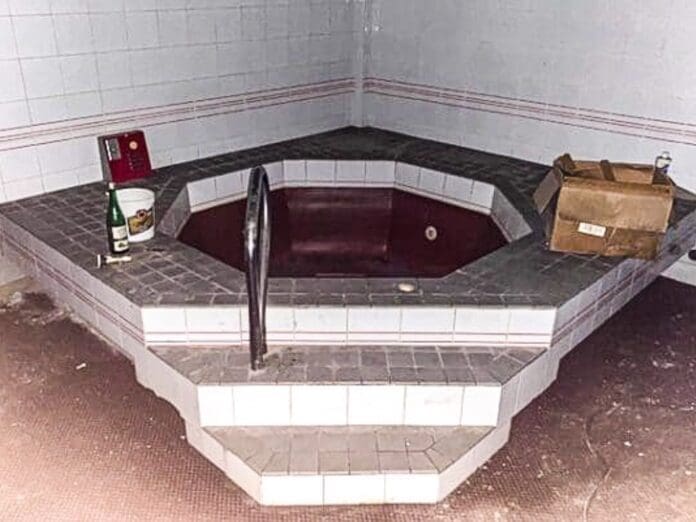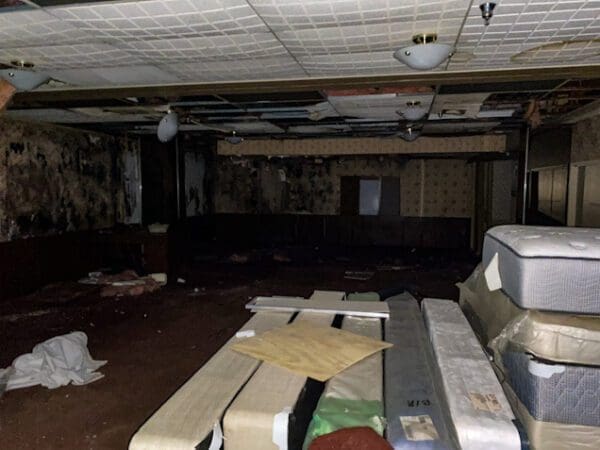
(Publisher’s Note: This is the second in a two-part series that covers the history of the former Wheeling Inn hotel on the corner of 10th and Main streets in downtown Wheeling. The structure, thanks to a recent vote by Wheeling’s City Council, will be demolished soon, but there was a stretch of time when the lodge’s rooms were full, the restaurant was considered one of the best in town, and the views of the Wheeling Suspension Bridge were priceless. This series initially was published more than a year ago.)
Lunch at the Tea Room in the basement of Stone & Thomas was special because the place was proper, despite featuring a lunch-counter kind of menu.
There were napkins and polished silverware perfectly placed on each table, and the patrons were usually dressed in clothes usually reserved for Sunday services. The food, though, was prepared out of sight, and the atmosphere was far less casual than what was found inside an Elby’s or Burger Chef.
The Tea Room – if space was even available, that is – was a part of “going to the city” for thousands of residents throughout the Upper Ohio Valley when they made the trek to downtown Wheeling during the 1950s through the 1980s. Main and Markets streets during those days offered a wide array of commerce with everything from hammers and nails to fine jewels and silk neckties.
Most communities up and down the Ohio River were stoked by local industry and five-and-dimes like G.C. Murphy anchored the downtowns in cities like Martins Ferry and Moundsville, but Wheeling served as the metropolis for the region because, throughout the history of the Friendly City, it was where everyone came to find everything they could possibly need.
That began to change, though, during the 1980s because the Ohio Valley Mall featured the new trend in the retail industry, and that was one-stop-shopping like downtowns offered but now a roof covered consumers as they strolled from store to store inside the biggest one-story building anyone had ever seen. Stores like Stones and L.S. Good suddenly became anchor stores at the mall, so the existing business owners began leaning on live entertainment more than ever.

“That’s when we heard a lot more about what shows were at the Civic Center and the Capitol (Theatre), and the (Best Western Wheeling Inn) was packed every weekend,” recalled Lynne Walton, a former bartender at the Riverside Lounge that operated inside the hotel. “I had always heard there were a lot of Canadians that came to Wheeling for the Jamboree shows, and that was true. There were more than I imagined.
“The businesses leaving downtown was a topic people talked about a lot, but it didn’t seem like it was doomsday or anything,” she said. “The hotel seemed like it was always crowded.”
That’s because there was always a party in the bar and on the balconies of the former Best Western Wheeling Inn. Fabulous Fanny’s was the first bar inside the Wheeling Inn when the hotel first opened in the early 1980s, and it was a small pub tucked away just off of the lobby and behind an Elby’s. Then came the Riverside Restaurant, a popular eatery that kept the Boury family in the food service business following the 1988 sale of 73 Elby’s locations in four states to Elias Brothers.
“The food was great, too,” Walton remembered. “I didn’t wait on many of the tables back then, but we had a lot of people who sat at the bar to eat their dinners while they met with their friends.
“With all of the news about the hotel and the demolition that’s coming sometime soon, I’ve thought about a lot of the people I used to work with and all of the friends I made,” she added. “So many people are really sad to see it go, but the Riverside closed a long time ago and that was really surprising to me because of the view from that back deck. Everyone always wanted to sit there.”
While the front signage for the Wheeling Inn and the Riverside was removed late last week, a demolition date has not been finalized by the owners, the Wheeling Convention and Visitors Bureau.
“There are steps that have to be taken, but we’re moving forward with all of it so that corner can have a new future,” said Frank O’Brien, the executive director of the Wheeling CVB. “The most important step has been taken, and we’re having a lot of conversations about what could be next for that part of our downtown.”











